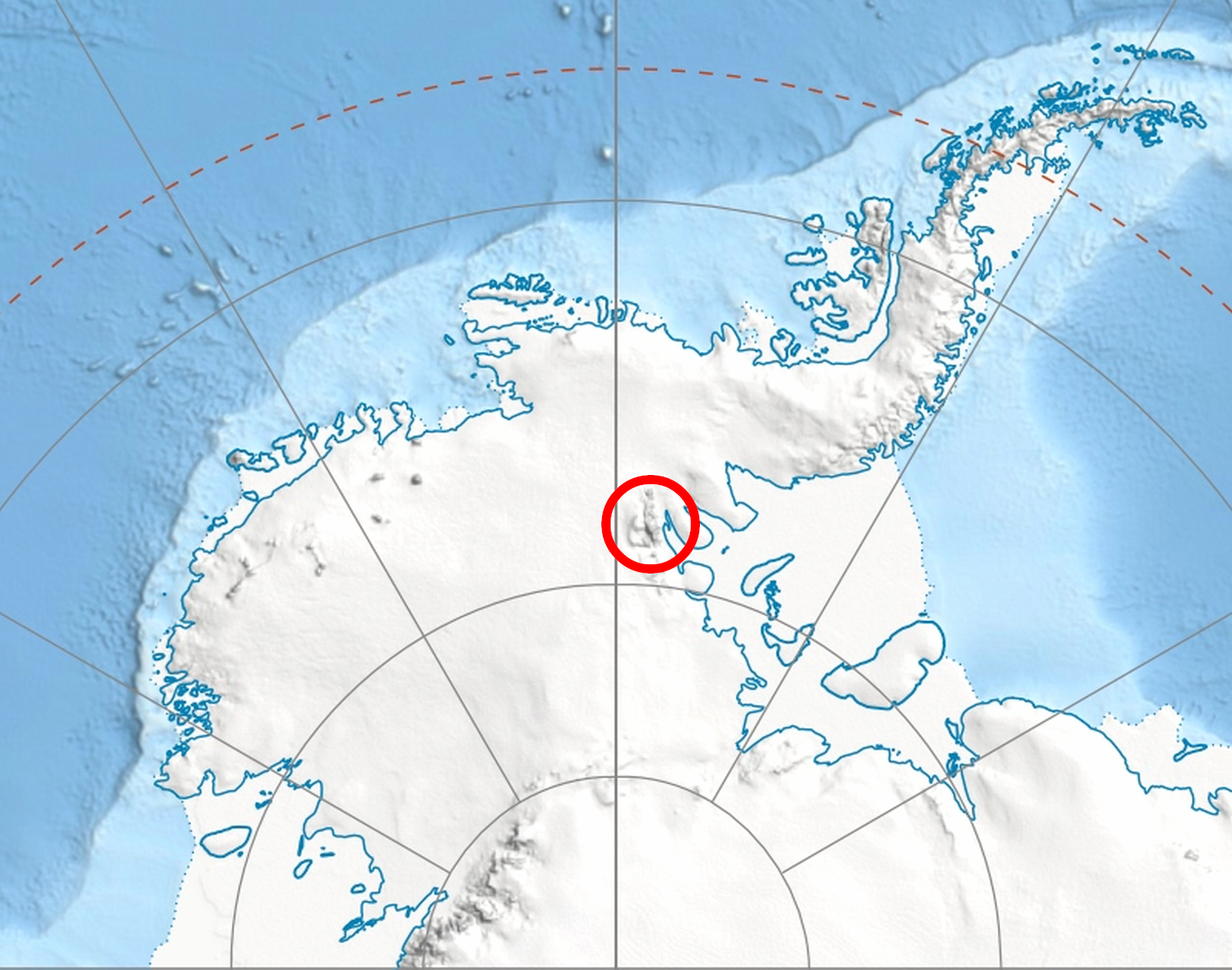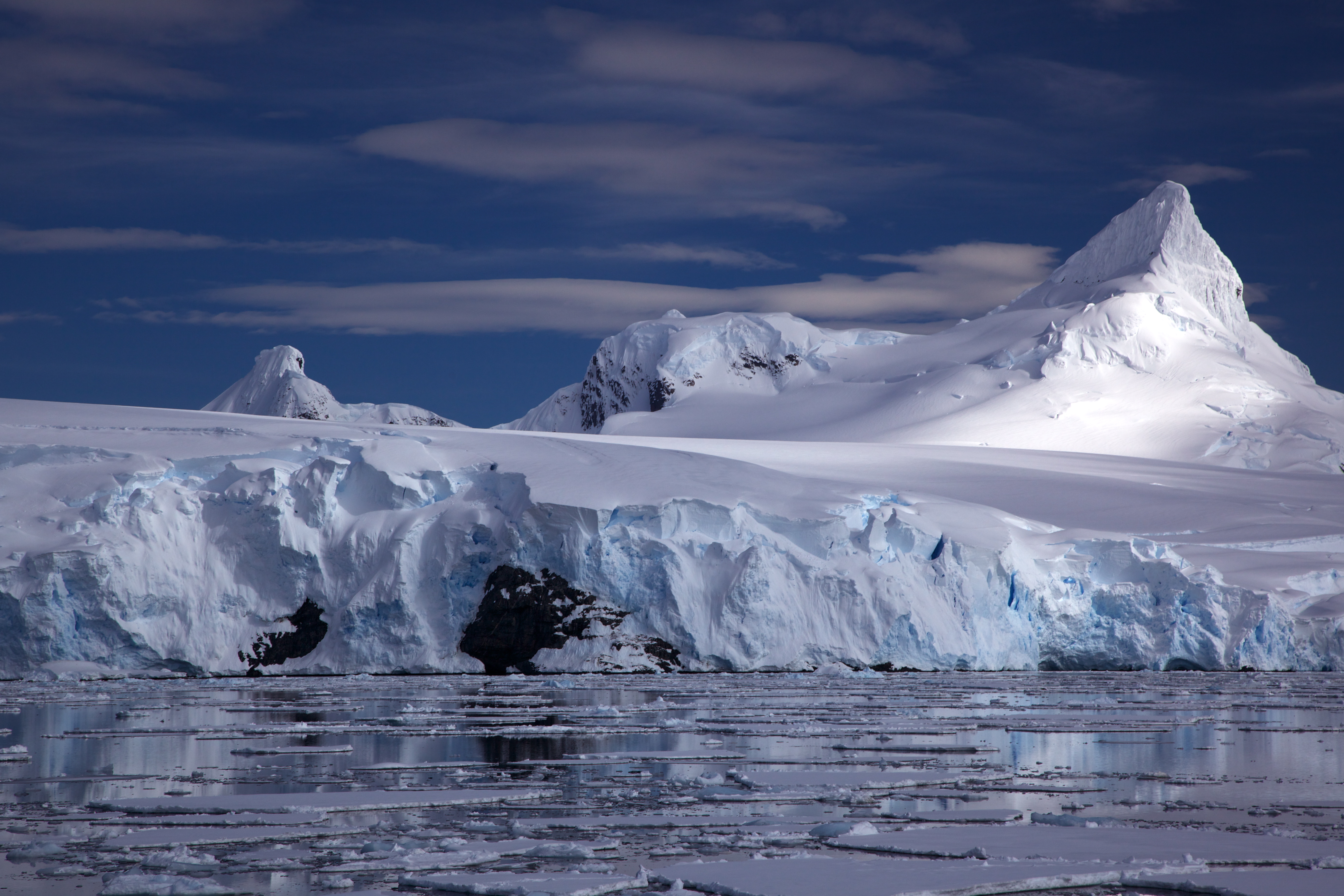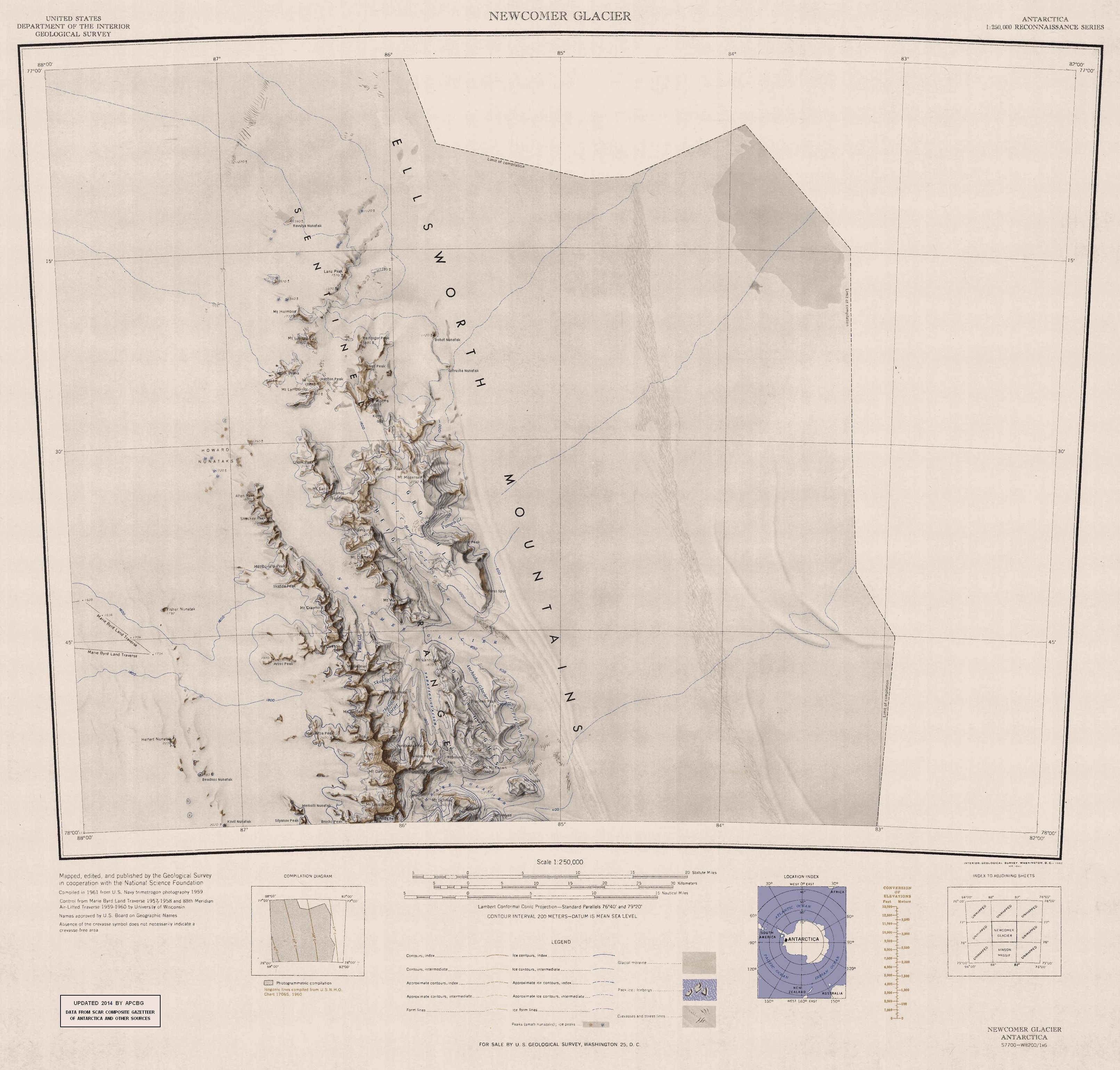|
Marsa Glacier
Marsa Glacier ( bg, ледник Марса, lednik Marsa, ) is the 5 km long and 1.5 km wide glacier in Bangey Heights on the east side of the main ridge of north-central Sentinel Range in Ellsworth Mountains, Antarctica. It is situated northeast of Patleyna Glacier and northwest of the head of Padala Glacier. The glacier drains the north slopes of Golemani Peak, flows north-northwestwards between Oreshak Peak and Fucha Peak, and joins Embree Glacier west of Mount Schmid. The glacier is named after the medieval settlement of Marsa in Southern Bulgaria. Location Marsa Glacier is centred at . US mapping in 1961 and 1988. See also * List of glaciers in the Antarctic * Glaciology Maps Vinson Massif. Scale 1:250 000 topographic map. Reston, Virginia: US Geological Survey, 1988. Antarctic Digital Database (ADD).Scale 1:250000 topographic map of Antarctica. Scientific Committee on Antarctic Research (SCAR). Since 1993, regularly updated. References Marsa GlacierSCA ... [...More Info...] [...Related Items...] OR: [Wikipedia] [Google] [Baidu] |
Sentinel Range
The Sentinel Range is a major mountain range situated northward of Minnesota Glacier and forming the northern half of the Ellsworth Mountains in Antarctica. The range trends NNW-SSE for about and is 24 to 48 km (15 to 30 mi) wide. Many peaks rise over and Vinson Massif (4892 m) in the southern part of the range is the highest elevation on the continent.Sentinel Range. SCAR Composite Antarctic Gazetteer. Sentinel Range comprises a main ridge (featuring Vinson Massif in its southern portion) and a number of distinct heights, ridges and mountains on its east side, including (south to north) Owen Ridge, |
Oreshak Peak
Oreshak Peak ( bg, връх Орешак, vrah Oreshak, ) is the peak rising to 2829 mReference Elevation Model of Antarctica. Polar Geospatial Center. University of Minnesota, 2019 in the of north-central in , . It is surmounting |
Antarctic Place-names Commission
The Antarctic Place-names Commission was established by the Bulgarian Antarctic Institute in 1994, and since 2001 has been a body affiliated with the Ministry of Foreign Affairs of Bulgaria. The Commission approves Bulgarian place names in Antarctica, which are formally given by the President of the Republic according to the Bulgarian Constitution (Art. 98) and the established international practice. Bulgarian names in Antarctica Geographical names in Antarctica reflect the history and practice of Antarctic exploration. The nations involved in Antarctic research give new names to nameless geographical features for the purposes of orientation, logistics, and international scientific cooperation. As of 2021, there are some 20,091 named Antarctic geographical features, including 1,601 features with names given by Bulgaria.Bulgarian Antarctic Gaze ... [...More Info...] [...Related Items...] OR: [Wikipedia] [Google] [Baidu] |
Composite Gazetteer Of Antarctica
The Composite Gazetteer of Antarctica (CGA) of the Scientific Committee on Antarctic Research (SCAR) is the authoritative international gazetteer containing all Antarctic toponyms published in national gazetteers, plus basic information about those names and the relevant geographical features. The Gazetteer includes also parts of the International Hydrographic Organization (IHO) General Bathymetric Chart of the Oceans (GEBCO) gazetteer for under-sea features situated south of 60° south latitude. , the overall content of the CGA amounts to 37,893 geographic names for 19,803 features including some 500 features with two or more entirely different names, contributed by the following sources: {, class="wikitable sortable" ! Country ! Names , - , United States , 13,192 , - , United Kingdom , 5,040 , - , Russia , 4,808 , - , New Zealand , 2,597 , - , Australia , 2,551 , - , Argentina , 2,545 , - , Chile , 1,866 , - , Norway , 1,706 , - , Bulgaria , 1,450 , - ... [...More Info...] [...Related Items...] OR: [Wikipedia] [Google] [Baidu] |
Scientific Committee On Antarctic Research
The Scientific Committee on Antarctic Research (SCAR) is an interdisciplinary body of the International Science Council (ISC). SCAR coordinates international scientific research efforts in Antarctica, including the Southern Ocean. SCAR's scientific work is administered through several discipline-themed ''science groups''. The organisation has observer status at, and provides independent advice to Antarctic Treaty Consultative Meetings, and also provides information to other international bodies such as the Intergovernmental Panel on Climate Change (IPCC) and the United Nations Framework Convention on Climate Change (UNFCCC). History At the International Council of Scientific Unions (ICSU)’s Antarctic meeting held in Stockholm from 9–11 September 1957, it was agreed that a committee should be created to oversee scientific research in Antarctica. At the time there were 12 nations actively conducting Antarctic research and they were each invited to nominate one delegate to ... [...More Info...] [...Related Items...] OR: [Wikipedia] [Google] [Baidu] |
Glaciology
Glaciology (; ) is the scientific study of glaciers, or more generally ice and natural phenomena that involve ice. Glaciology is an interdisciplinary Earth science that integrates geophysics, geology, physical geography, geomorphology, climatology, meteorology, hydrology, biology, and ecology. The impact of glaciers on people includes the fields of human geography and anthropology. The discoveries of water ice on the Moon, Mars, Europa and Pluto add an extraterrestrial component to the field, which is referred to as "astroglaciology". Overview A glacier is an extended mass of ice formed from snow falling and accumulating over a long period of time; glaciers move very slowly, either descending from high mountains, as in valley glaciers, or moving outward from centers of accumulation, as in continental glaciers. Areas of study within glaciology include glacial history and the reconstruction of past glaciation. A glaciologist is a person who studies glaciers. A glaci ... [...More Info...] [...Related Items...] OR: [Wikipedia] [Google] [Baidu] |
List Of Glaciers In The Antarctic
There are many glaciers in the Antarctic. This set of lists does not include ice sheets, ice caps or ice fields, such as the Antarctic ice sheet, but includes glacial features that are defined by their flow, rather than general bodies of ice. The lists include outlet glaciers, valley glaciers, cirque glaciers, tidewater glaciers and ice streams. Ice streams are a type of glacier and many of them have "glacier" in their name, e.g. Pine Island Glacier. Ice shelves are listed separately in the List of Antarctic ice shelves. For the purposes of these lists, the Antarctic is defined as any latitude further south than 60° (the continental limit according to the Antarctic Treaty System). List by letters * List of glaciers in the Antarctic: A–H * List of glaciers in the Antarctic: I–Z See also * List of Antarctic and subantarctic islands * List of Antarctic ice rises * List of Antarctic ice shelves This is a list of Antarctic ice shelves. Ice shelves ar ... [...More Info...] [...Related Items...] OR: [Wikipedia] [Google] [Baidu] |
Mount Schmid
Mount Schmid () is a mountain on the south side of Embree Glacier, rising 8 km east of Mount Goldthwait in Bangey Heights in the northern portion of the Sentinel Range, Antarctica. Mapped by USGS from surveys and US Navy air photos, 1957–59. Named by the US-ACAN for Captain Ernest A. Schmid, USAF, who participated in the establishment of the IGY South Pole Station South is one of the cardinal directions or compass points. The direction is the opposite of north and is perpendicular to both east and west. Etymology The word ''south'' comes from Old English ''sūþ'', from earlier Proto-Germanic ''*sun� ... during the 1956–57 season. References Ellsworth Mountains Mountains of Ellsworth Land {{EllsworthLand-geo-stub ... [...More Info...] [...Related Items...] OR: [Wikipedia] [Google] [Baidu] |
Fucha Peak
Fucha Peak ( bg, връх Фуча, vrah Fucha, ) is the peak rising to 2604 mReference Elevation Model of Antarctica. Polar Geospatial Center. University of Minnesota, 2019 in the central part of Bangey Heights, north-central Sentinel Range in Ellsworth Mountains, Antarctica. It surmounts Marsa Glacier to the west and Padala Glacier to the southeast. The peak is named after the settlements of Mala Fucha, Mala (Little) Fucha and Gilema Fucha, Golema (Great) Fucha in Western Bulgaria. Location Fucha Peak is located at , which is 2.45 km northeast of Golemani Peak, 2.66 km east of Oreshak Peak, 2.8 km south by west of Mount Schmid, and 11.43 km northwest of Zimornitsa Peak. US mapping in 1961, updated in 1988.See also * Mountains in Antarctic ...[...More Info...] [...Related Items...] OR: [Wikipedia] [Google] [Baidu] |
Golemani Peak
Golemani Peak ( bg, връх Големани, vrah Golemani, ) is the peak rising to 2976 mReference Elevation Model of Antarctica. Polar Geospatial Center. University of Minnesota, 2019 in the of north-central Sentinel Range in Ellsworth Mountains, . It surmounts |
Antarctica
Antarctica () is Earth's southernmost and least-populated continent. Situated almost entirely south of the Antarctic Circle and surrounded by the Southern Ocean, it contains the geographic South Pole. Antarctica is the fifth-largest continent, being about 40% larger than Europe, and has an area of . Most of Antarctica is covered by the Antarctic ice sheet, with an average thickness of . Antarctica is, on average, the coldest, driest, and windiest of the continents, and it has the highest average elevation. It is mainly a polar desert, with annual precipitation of over along the coast and far less inland. About 70% of the world's freshwater reserves are frozen in Antarctica, which, if melted, would raise global sea levels by almost . Antarctica holds the record for the lowest measured temperature on Earth, . The coastal regions can reach temperatures over in summer. Native species of animals include mites, nematodes, penguins, seals and tardigrades. Where ve ... [...More Info...] [...Related Items...] OR: [Wikipedia] [Google] [Baidu] |
Padala Glacier
Padala Glacier ( bg, ледник Падала, lednik Padala, ) is the long and wide glacier in Bangey Heights on the east side of the main ridge of north-central Sentinel Range in Ellsworth Mountains, Antarctica. It is situated northwest of Kopsis Glacier and east-southeast of Marsa Glacier. The glacier drains the northeast slopes of Bezden Peak and the southeast slopes of Golemani Peak, flows northeastwards and joins Embree Glacier northwest of Mount Hleven. The glacier is named after the settlement of Padala in Western Bulgaria. Location Padala Glacier is centred at . US mapping in 1961 and 1988. See also * List of glaciers in the Antarctic * Glaciology Maps Vinson Massif. Scale 1:250 000 topographic map. Reston, Virginia: US Geological Survey, 1988. Antarctic Digital Database (ADD).Scale 1:250000 topographic map of Antarctica. Scientific Committee on Antarctic Research (SCAR). Since 1993, regularly updated. References Padala GlacierSCAR Composite Gazetteer of An ... [...More Info...] [...Related Items...] OR: [Wikipedia] [Google] [Baidu] |








